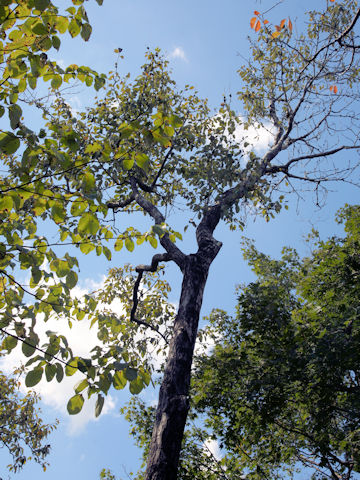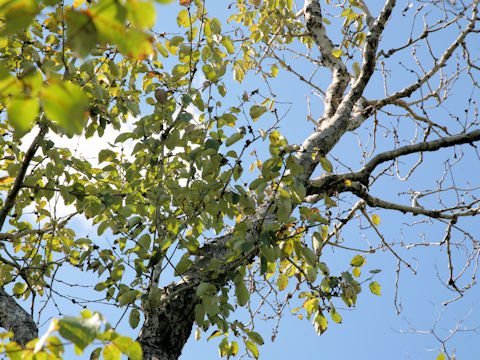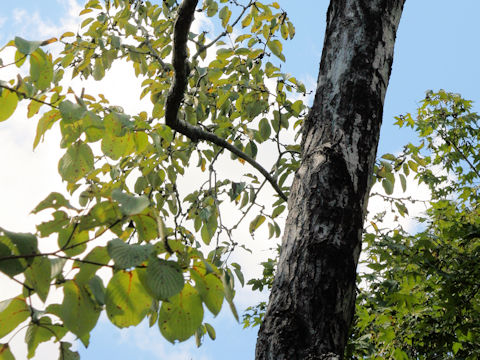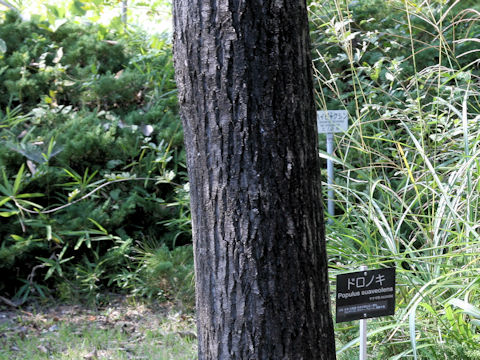
|
The Japanese poplar (Populus suaveolens) belongs to Salicaceae (the Willow family). It is a tall deciduous tree that is distributed from the central region of Honshu northwards to Hokkaido in Japan, as well as the Kuril Islands, Sakhalin, Kamchatka, the Korean Peninsula, north-central China and Siberia. It grows in mountain wetlands and riparian forests, and can reach heights of 15 to 30 m. The bark is greenish-white on young trees, but becomes dark gray on older trees. The surface of young trees is smooth, with diamond-shaped lenticels scattered across it, but as the tree ages, it develops vertical cracks. The leaf blade is broadly elliptic, with serrated edges, and the underside is light greenish-white with prominent leaf veins. It is dioecious, and flowers from April to June before the leaves have fully developed. The seeds have woolly hairs like those of other willow species, and are dispersed by wind and water currents. In Chinese, it is called "甜楊" (tian yang).
|



